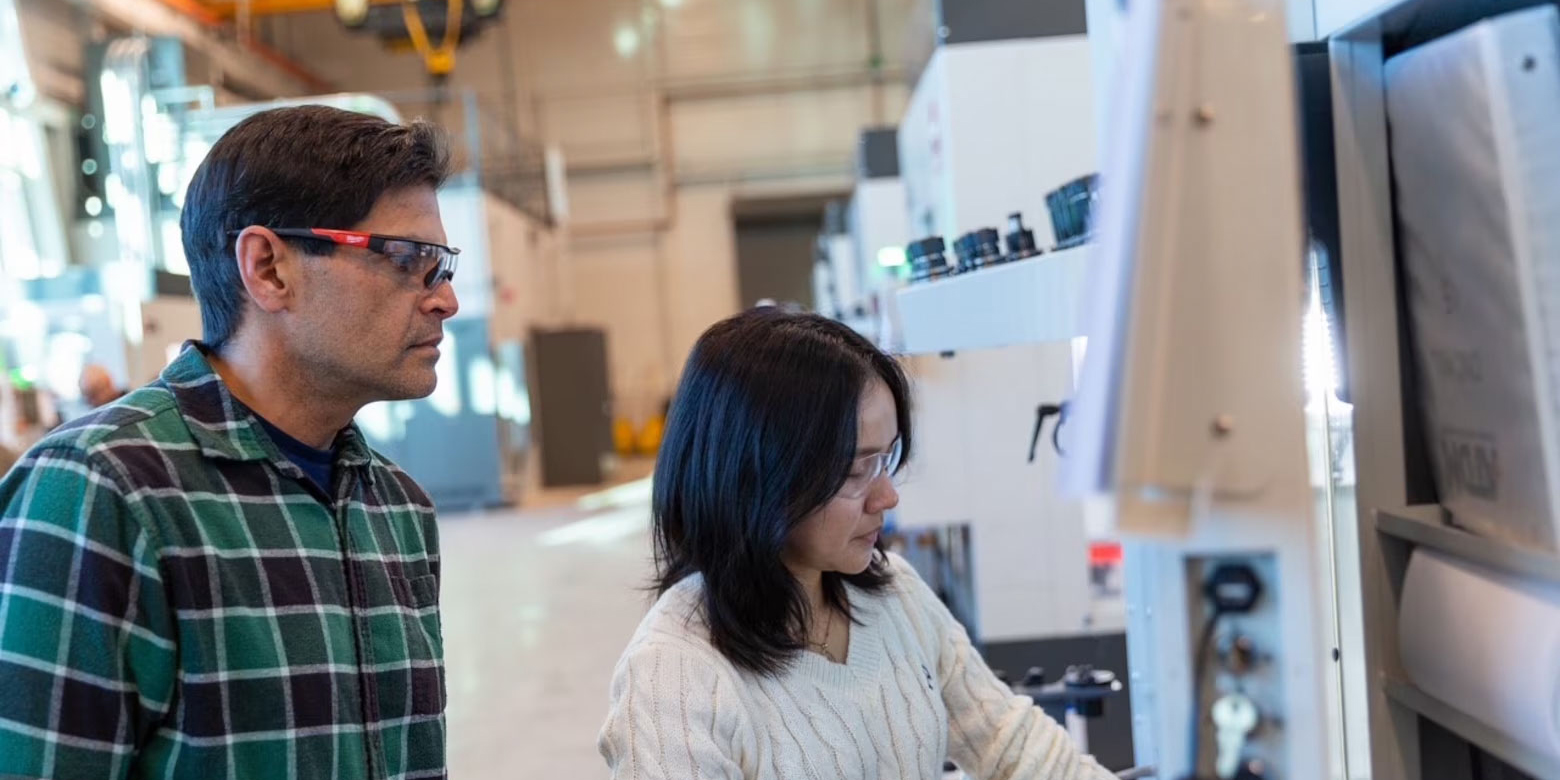 Creating a talent pipeline for the nation’s shipbuilding industry is the aim of a new training center that has opened in Danville, Virginia. Photo courtesy of the Institute for Advanced Learning and Research
Creating a talent pipeline for the nation’s shipbuilding industry is the aim of a new training center that has opened in Danville, Virginia. Photo courtesy of the Institute for Advanced Learning and Research Training Center will Widen Talent Pipeline for Shipbuilding
Published February 12, 2025
The U.S. Navy last month opened a new training center in Danville, Va., as part of larger effort to revitalize the nation’s shipbuilding capability, a move that stands to pay dividends for Newport News Shipbuilding.
The Accelerated Training in Defense Manufacturing (ATDM) program, launched in 2021, has graduated more than 777 students from 45 states, Guam, Puerto Rico, and Australia. About 25% of participants are veterans, and the program boasts a 90% job placement rate within the defense industrial base.
The new National Training Center is a modern 100,000-square-foot facility on the Institute for Advanced Learning and Research (IALR) campus. It welcomed its first cohort of students last month, with the goal of training 1,000 students annually. The goal is to create a pipeline of skilled workers critical for building and maintaining the nation’s submarines and warships.
“This facility helps address our immediate workforce needs,” said Frederick “Jay” Stefany, the Direct Reporting Program manager for the Maritime Industrial Base (MIB) Program. “It advances our efforts to restore our industrial base and ensure our industry partners have the skilled workforce they need to build and maintain the Navy’s fleet.”
The Navy’s shipbuilding plans include the construction of Columbia-class and Virginia-class submarines and more than 10 different classes of surface ships, including aircraft carriers.
ATDM’s intensive training program provides students with 600 hours of hands-on experience in one of five trades critical to maritime manufacturing: welding, CNC machining, additive manufacturing, quality assurance, and non-destructive testing. Training runs on three shifts, mirroring the 24/7 operations of the defense industry.
The Maritime Industrial Base Program leads the Navy’s workforce development initiatives while advancing shipbuilding and repair capabilities through industrial base development, supply chain resilience, and advanced manufacturing technologies. With the U.S. manufacturing base having shrunk to a third of its size from 30 years ago, the program must overcome major challenges. One of these pressing challenges involves recruiting and training 140,000 new workers over the next decade for submarine production and sustainment, with an additional 110,000 workers needed for surface vessel construction and maintenance.
“The decline in American manufacturing has created a critical skills gap,” said Erica Logan, Workforce Director for the MIB Program. “But we’re not just filling jobs—we’re rebuilding America’s maritime manufacturing capability and offering meaningful careers for the next generation of workers. Every graduate represents another step toward restoring our nation’s industrial strength.”
The IALR campus hosts the National Training Center and another key MIB Program initiative: the Navy’s Additive Manufacturing Center of Excellence. This co-location creates a hub for maritime manufacturing innovation.
For more information about ATDM and its programs, visit www.atdm.org.